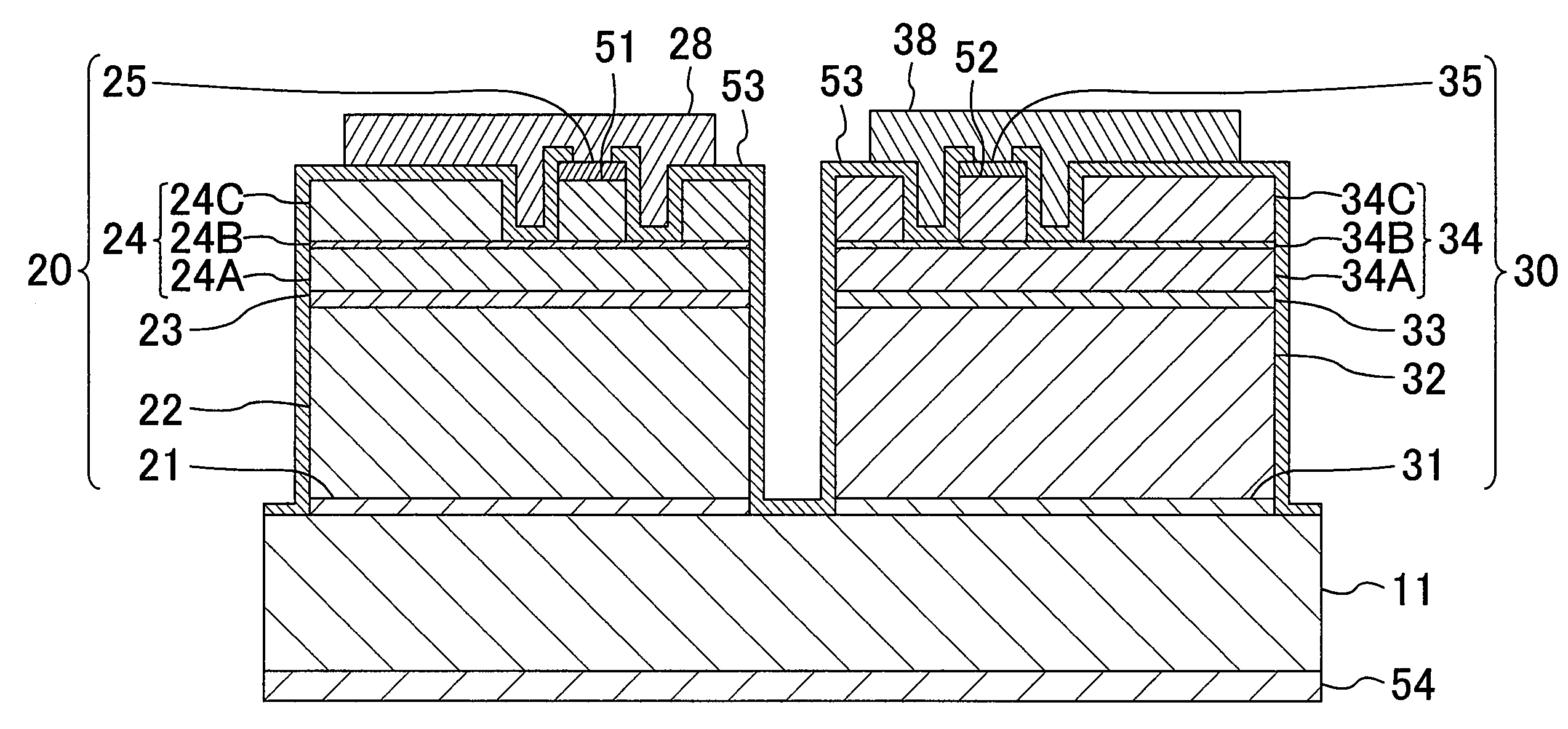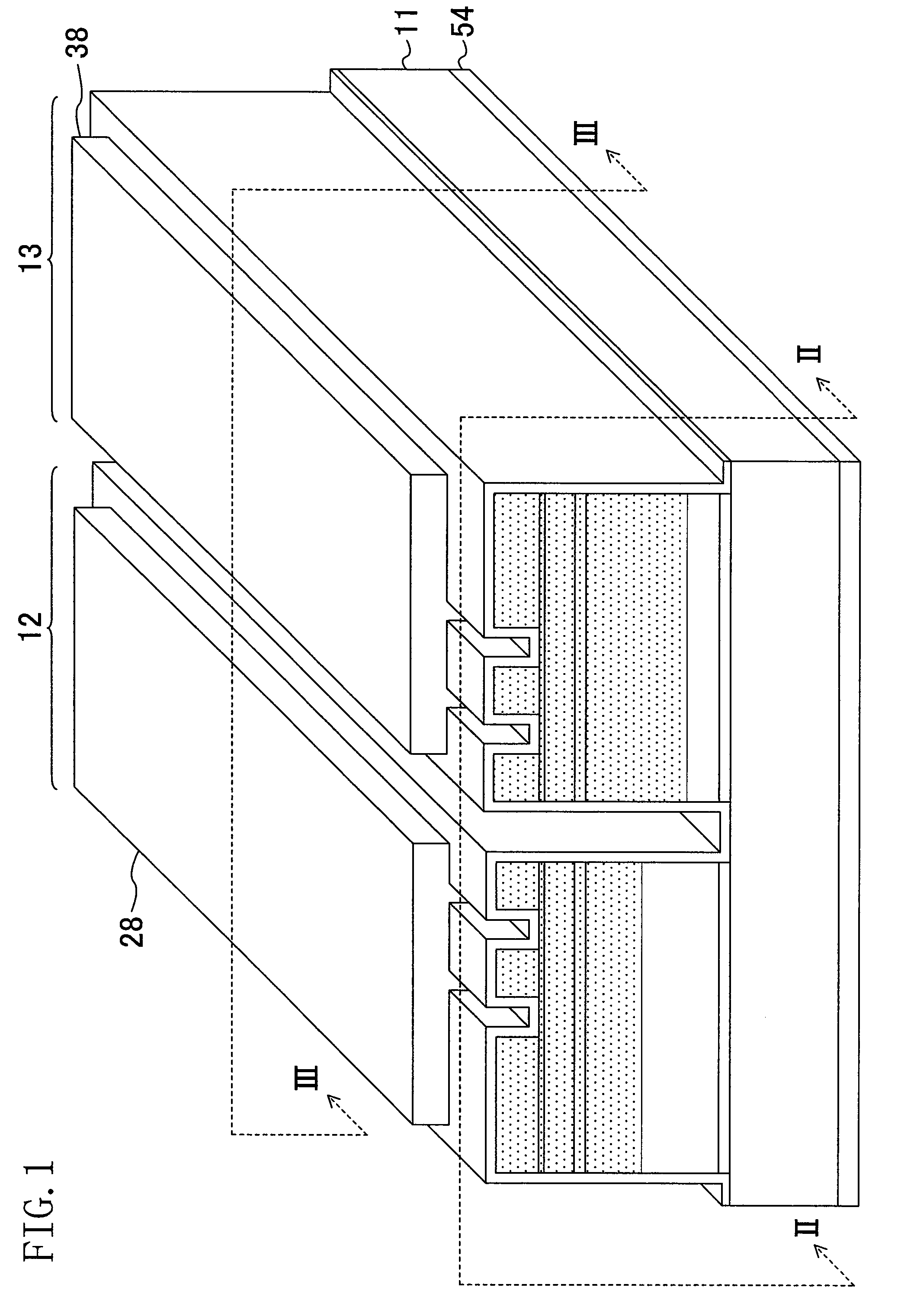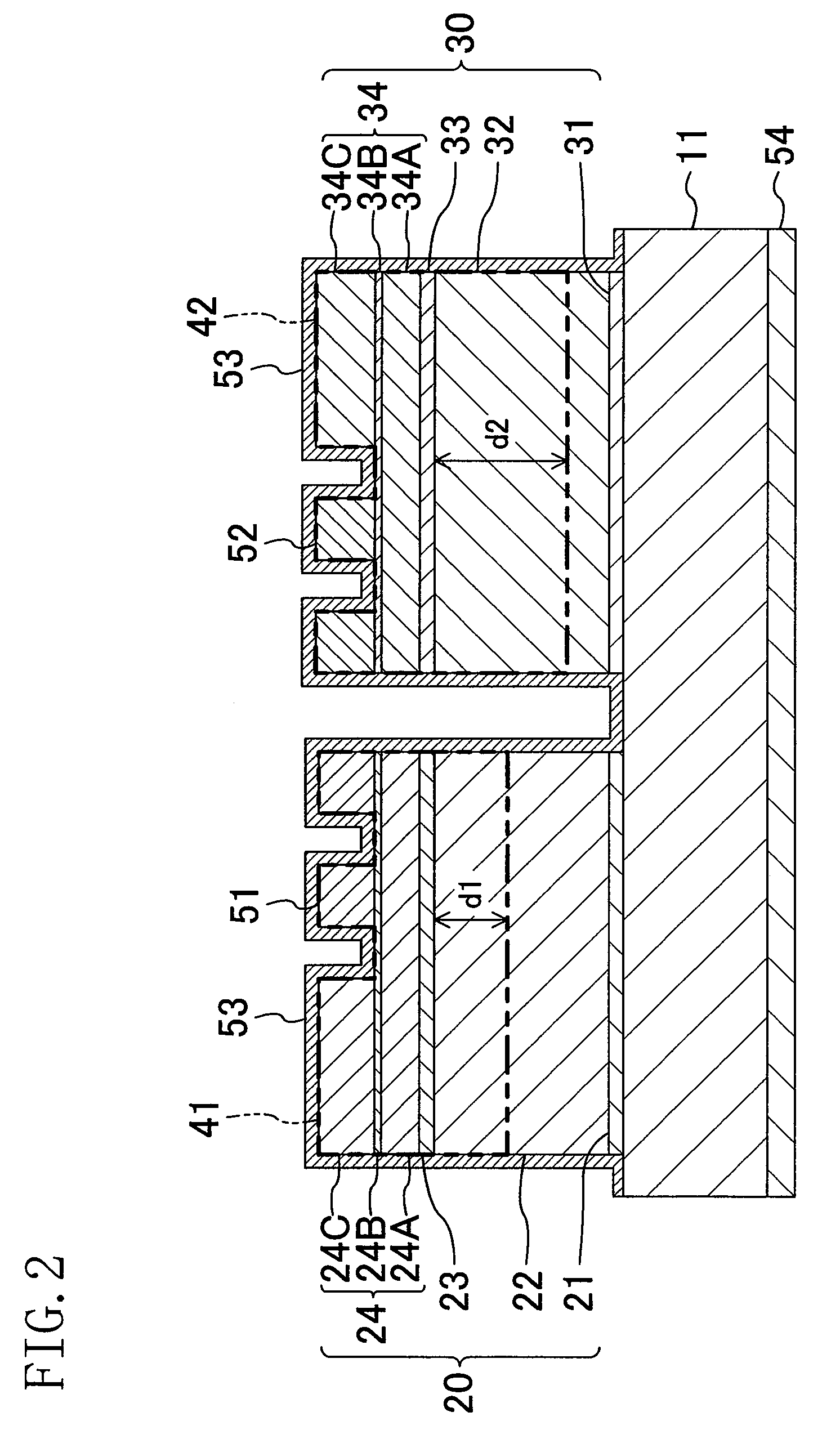Semiconductor laser device and manufacturing method thereof
a laser device and semiconductor technology, applied in semiconductor lasers, laser details, electrical devices, etc., can solve the problems difficult to maximize the characteristics of each laser element, and increasing the amount of wavelength shifts, so as to achieve the effect of increasing the number of diffusion steps
- Summary
- Abstract
- Description
- Claims
- Application Information
AI Technical Summary
Benefits of technology
Problems solved by technology
Method used
Image
Examples
first embodiment
[0046]Hereinafter, a first embodiment of the invention will be described with reference to the figures. FIG. 1 shows a structure of a semiconductor laser device according to the first embodiment. FIG. 2 shows a structure of a cross section (a window region) taken along line II-II in FIG. 1, and FIG. 3 shows a structure of a cross section (a gain region) taken along line III-III in FIG. 1.
[0047]As shown in FIGS. 1 through 3, the semiconductor laser device of this embodiment is a monolithic dual-wavelength semiconductor laser device including an infrared laser element 12 and a red laser element 13 which are formed on an n-type GaAs (gallium arsenide) semiconductor substrate 11.
[0048]The infrared laser element 12 has a first semiconductor layer 20. The first semiconductor layer 20 includes a first buffer layer 21, a first n-type cladding layer 22, a first active layer 23, a first p-type cladding layer 24, and a first contact layer 25 which are sequentially formed on the semiconductor s...
second embodiment
[0082]Hereinafter, a second embodiment of the invention will be described with reference to the figures. FIG. 14 shows a structure of a semiconductor laser device according to the second embodiment. FIG. 15 shows a cross-sectional structure taken along line XV-XV in FIG. 14, and FIG. 16 shows a cross-sectional structure taken along line XVI-XVI in FIG. 14. In FIGS. 14 through 16, the same elements as those in FIGS. 1 through 3 are denoted with the same reference numerals and characters, and description thereof will be omitted.
[0083]In the semiconductor laser device of the second embodiment, the lower end of the first end face window structure 41 of the infrared laser element 12 does not reach the lower end of the first n-type cladding layer 22, and the lower end of the second end face window structure 42 of the red laser element 13 reaches the lower end of the second n-type cladding layer 32.
[0084]In the semiconductor laser device of this embodiment, the composition of the second bu...
third embodiment
[0093]Hereinafter, a third embodiment of the invention will be described with reference to the figures. FIG. 18 shows a structure of a semiconductor laser device according to the third embodiment. FIG. 19 shows a cross-sectional structure taken along line XIX-XIX in FIG. 18, and FIG. 20 shows a cross-sectional structure taken along line XX-XX in FIG. 18. In FIGS. 18 through 20, the same elements as those of FIGS. 1 through 3 are denoted with the same reference numerals and characters, and description thereof will be omitted.
[0094]In the semiconductor laser device of the third embodiment, the lower end of the first end face window structure 41 of the infrared laser element 12 does not reach the lower end of the first n-type cladding layer 22, and the lower end of the second end face window structure 42 of the red laser element 13 reaches the lower end of the second n-type cladding layer 32. The first end face window structure 41 is formed below the first etch stop layer 24B.
[0095]In ...
PUM
 Login to View More
Login to View More Abstract
Description
Claims
Application Information
 Login to View More
Login to View More - R&D
- Intellectual Property
- Life Sciences
- Materials
- Tech Scout
- Unparalleled Data Quality
- Higher Quality Content
- 60% Fewer Hallucinations
Browse by: Latest US Patents, China's latest patents, Technical Efficacy Thesaurus, Application Domain, Technology Topic, Popular Technical Reports.
© 2025 PatSnap. All rights reserved.Legal|Privacy policy|Modern Slavery Act Transparency Statement|Sitemap|About US| Contact US: help@patsnap.com



